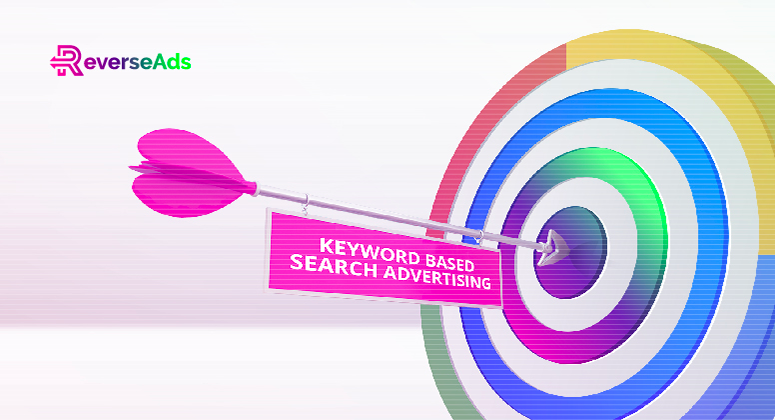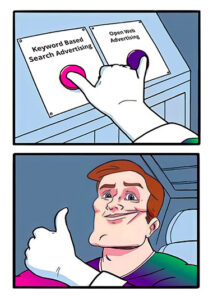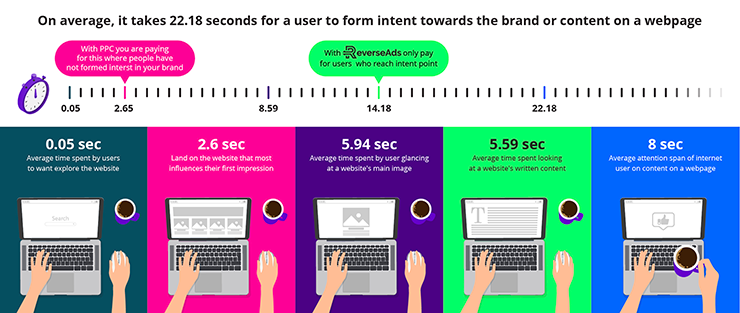Keyword Advertising and the Open Web

Hitting Bullseye: Keywords and the Open Web
All the right words in all the right places
Key factors that help make an online ad memorable are accuracy and placement

61% of web users looking for high-quality content will first turn to review websites, forums, or comparator websites compared to just 39% who would visit Google, Facebook, YouTube, and Instagram.
This goes to show that the ‘open web’ is viewed as more trustworthy among Internet users; they are also more receptive to being shown relevant ads while on the open web.
How to unlock your ad’s true potential on the open web
1. Precise targeting
Precision in your targeting is important for two reasons: time and money. One of the best methods to achieve this on the open web is keyword-based search advertising. By inputting relevant words onto your ad, you can accurately target the customers that you would like to attract to your brand when they input similar words onto their search bars.
2. Place your ads outside of Google
Although the “spray and pray” method (firing your ads aggressively in an attempt to be on the first page of Google Search) will get you some form of brand awareness, it’s not without tiring out your efforts and, more importantly, exhausting your ad budget. On the flipside, keyword-based search advertising on the open web is a great alternative to save on both requirements, and you’ll also be able to get more genuine, quality leads by almost tenfold.
Keyword Advertising on the Open Web to 10x Your Conversion Rate
The open web is a natural home for ad-funded models. Over 40% of people have said that they are more likely to feel the impact and effectiveness of open web ads compared to ads shown in walled gardens like Google and Facebook.
Here are 3 reasons why keyword-based advertising on the open web can 10x your lead generation
Over 2 million Websites Worldwide = Increased Exposure
It’s elementary.
While 6% of people are likely to buy a product or service by clicking on your Google Ads, advertising on the open web is vastly different. ‘One search, one chance’ effectively summarizes what advertising on Google Ads is as it only touches the first step of a prospect’s purchase intent funnel.
Open web advertising covers the entire buyer journey, and by using keyword-based ads on the open web with a data augmentation system, you can serve more targeted ads based on a user’s consideration points. It’s an open playing field, and a true test of your research capabilities.
This process will then require an in-depth investigation by your target’s key decision-makers prior to a transaction, and is what’s called a ‘considered purchase’.
If 23% of people are spending their time in the walled gardens, it is therefore wiser to focus your efforts on the 77% who are on the open web.
Genuine Conversion Rates
With 77% of respondents say that they trust articles on the open web more than those on walled gardens, this translates directly into having better conversion rates should one participate in open web keyword-based advertising.
Compared to Google, where many of the click rates are due to accidental clicks and ad fraud, the open web is much more diverse where click fraud is not as rampant. Although ad fraud can still find a home on the open web, it is typically more preventable (e.g., Checking the IP Address, going through trustable sources), and will therefore allow keyword-based advertising to make a bigger impact; making more genuine conversions in the long run.
Wiser Budgeting
Keyword-based advertising, on its own, comes with a lot of cost.
Ad fraud and the CPC model: the totaled loss has exceeded 35 billion last year, and is expected to keep rising as people are staying indoors. With walled garden advertising, this figure is mostly due to bots and the like, so how many are actual, real-life customers?
On the open web, the click rate is more diverse (in a good way!) due to scattered bots and precise targeted ads, which leads to better spending of your marketing budget. Although CPC woes are still an issue, on our end, we have adopted a fresh model for online advertising: the “Cost Per Intent” model (CPIn).
As it’s coined after, you’ll only be paying for ‘clicks’ once the customer reaches the point of intent, which means audiences spending longer than 22 seconds on your website, visiting 3 pages or more, or reaching 100% scroll depth – effectively reducing paying for fraudulent clicks.
Click here to find out more about this solution.

It’s not all Sunshine and Rainbows
The time and complexity required for an effective impact will be immense as the open web is a lot more diverse than the walled gardens, and could ultimately be a deterrent to those who are searching for a better solution to online advertising.
Our ReverseAds app is able to guide you through this process seamlessly. It is an all-in-one advertising tool that can help you to launch keyword advertising campaigns successfully and precisely. In 5 easy steps, our Keyword Assignment Algorithm will improve the accuracy of your digital advertising targeting by predicting the entire path to purchase, and this leads to doubling your ad campaign performance for a more genuine lead generation flow.
Schedule a meeting with us today, and you’ll be on your way to a better, more refined method of advertising.





